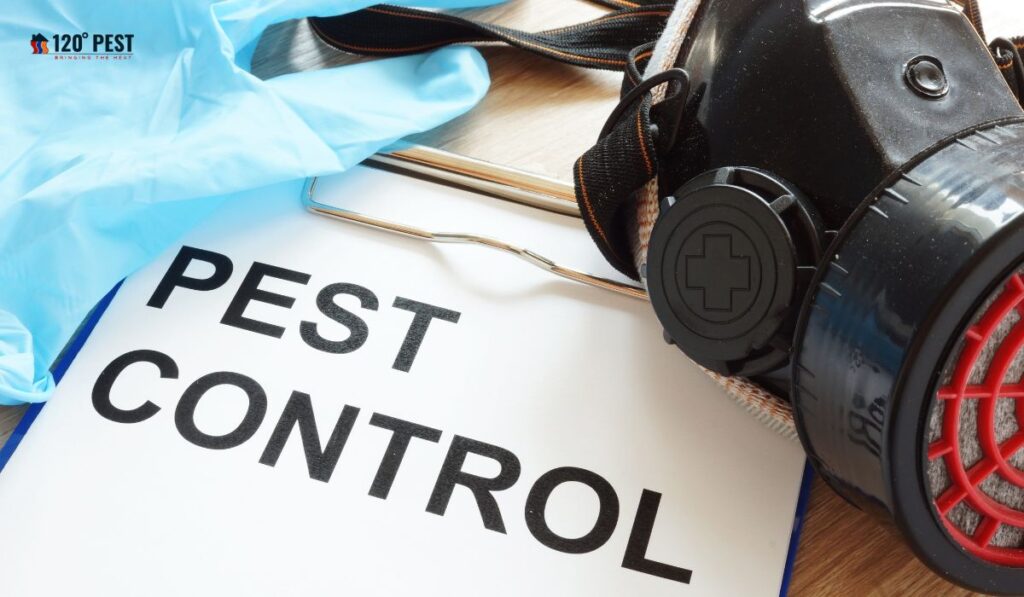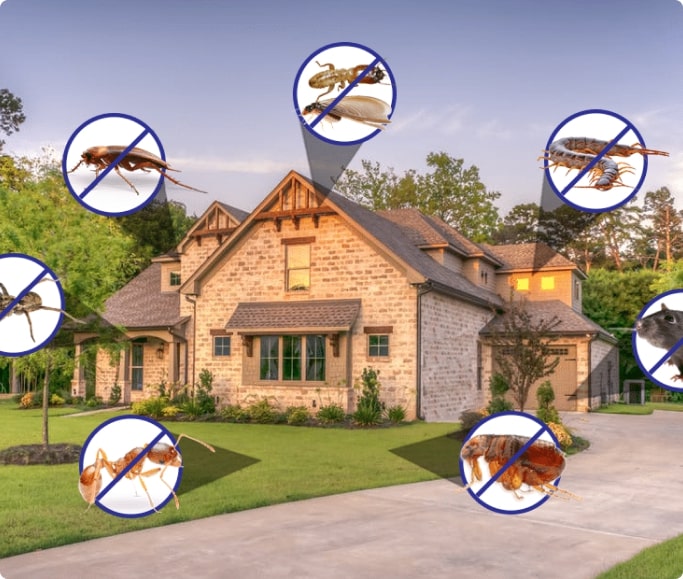In the realm of homeownership, few things are as vital as safeguarding your home against unwanted intruders. While the image of a burglar breaking into your home might be the first thing that comes to mind, there’s another type of intruder that can wreak havoc on your property: pests. From tiny insects to larger rodents, pests can pose significant threats to both the structural integrity of your home and the health and safety of your family. Understanding the importance of pest protection and taking proactive measures to prevent infestations is crucial for maintaining a healthy and secure living environment.
The Threat of Pests
Pests come in various shapes and sizes, ranging from common household insects like ants, cockroaches, and termites to larger nuisances such as rodents, including rats and mice. While some pests may seem harmless at first glance, they can multiply rapidly and cause extensive damage to your home over time.
One of the most significant threats posed by pests is structural damage. Termites, for example, are notorious for their ability to chew through wood, causing weakening of the structure and potentially leading to costly repairs. Rodents can also cause damage by gnawing on wires, insulation, and even structural elements, posing fire hazards and compromising the safety of your home.
In addition to physical damage, pests can also pose health risks to you and your family. Many pests carry disease-causing pathogens that can contaminate food, surfaces, and air quality within your home. For example, cockroaches are known to spread allergens and trigger asthma attacks, while rodents can transmit diseases such as hantavirus and salmonellosis through their droppings and urine.
The Importance of Pest Protection
Given the potential threats posed by pests, implementing effective pest protection measures is essential for maintaining the integrity of your home and ensuring the health and safety of your family. Here are some reasons why pest protection should be a top priority for homeowners:
Prevent Structural Damage: By implementing pest control measures, you can prevent pests such as termites and rodents from causing damage to the structural elements of your home. Regular inspections and treatments can help detect and eradicate pests before they have a chance to inflict significant harm.
Protect Health and Safety: Pests can carry a wide range of pathogens and allergens that pose health risks to you and your family. Implementing pest control measures can help reduce the spread of disease and allergens, creating a healthier living environment for everyone in your household.

Preserve Property Value: A pest-free home is more attractive to potential buyers and retains its value better than a home that has been infested with pests. By investing in pest protection, you can preserve the value of your property and avoid potential depreciation caused by pest-related damage.
Peace of Mind: Knowing that your home is protected against pests can provide peace of mind for you and your family. Instead of worrying about infestations and the damage they can cause, you can focus on enjoying your home and creating lasting memories with your loved ones.
Effective Pest Protection Strategies
Implementing effective pest protection strategies involves a combination of preventive measures and proactive interventions. Here are some key steps you can take to safeguard your home against pests:
Seal Entry Points: Pests often gain access to your home through small cracks, gaps, and openings in the exterior. Seal these entry points with caulk or weather stripping to prevent pests from infiltrating your home.
Maintain Cleanliness: Keep your home clean and free of food debrumbs, and standing water, which can attract pests like ants, cockroaches, and rodents. Regularly vacuum, sweep, and mop floors, and store food in airtight containers to minimize the risk of infestations.
Eliminate Standing Water: Pests such as mosquitoes breed in standing water, so it’s essential to eliminate any sources of standing water around your home. Repair leaky faucets, clear clogged gutters, and remove stagnant water from birdbaths, flower pots, and other outdoor containers.
Trim Vegetation: Overgrown vegetation can provide hiding places and access points for pests like rodents and insects. Keep shrubs, trees, and other vegetation trimmed and away from the exterior of your home to reduce the risk of infestations.
Schedule Regular Inspections: Schedule regular inspections with a licensed pest control professional to assess your home for signs of pest activity and implement preventive treatments as needed. Early detection and intervention are key to preventing pest infestations from taking hold.
Invest in Professional Pest Control: In cases of severe infestations or persistent pest problems, it may be necessary to enlist the help of a professional pest control company. Trained technicians can identify the underlying causes of pest infestations and implement targeted treatments to eradicate pests effectively.
Integrated Pest Management (IPM)
One effective approach to pest protection is Integrated Pest Management (IPM), a holistic and sustainable strategy that combines multiple tactics to prevent and control pests. IPM focuses on minimizing the use of chemical pesticides while emphasizing preventive measures, habitat modification, and the use of environmentally friendly pest control methods.
The key components of IPM include:
Identification: Proper identification of pests and understanding their behavior is crucial for developing targeted control strategies. By identifying the specific pests present in your home, pest control professionals can tailor their approach to effectively manage the infestation.
Monitoring: Regular monitoring of pest activity allows homeowners and pest control professionals to track changes in pest populations and assess the effectiveness of control measures. Monitoring techniques may include visual inspections, trapping, and the use of monitoring devices.
Prevention: The cornerstone of IPM is prevention, which involves eliminating factors that attract pests and implementing measures to prevent infestations from occurring in the first place. This may include sealing entry points, maintaining cleanliness, and implementing landscaping practices that deter pests.
Control: When pest populations exceed acceptable levels despite preventive measures, targeted control methods may be necessary to reduce their numbers. These methods may include the use of baits, traps, biological controls, and, in some cases, carefully selected pesticides.
Evaluation: Continuous evaluation of IPM strategies is essential for identifying areas of improvement and refining control techniques. By monitoring the effectiveness of control measures and adjusting tactics as needed, homeowners can achieve long-term pest management success.
Conclusion
Protecting your home against pests is not just a matter of convenience; it’s a critical aspect of maintaining a safe, healthy, and comfortable living environment for you and your family. By understanding the significance of pest protection and implementing effective strategies to prevent infestations, you can safeguard your home against the potential threats posed by pests and enjoy peace of mind knowing that your home is secure. Remember, when it comes to pest control, prevention is always better than cure. For professional assistance in safeguarding your home against pests, contact us at 120 Pest Control today.
FAQs
Why is pest protection important for homeowners?
Pest protection is vital for homeowners because pests can cause significant damage to the structural integrity of a home and pose health risks to occupants. Termites, rodents, and insects can chew through wood, wires, and insulation, leading to costly repairs. Additionally, pests can carry disease-causing pathogens that contaminate food, surfaces, and air quality within the home.
How can pests damage my home?
Pests such as termites and rodents can cause structural damage by chewing through wood, wires, and insulation. This can weaken the structure of the home and potentially lead to safety hazards such as electrical fires. Additionally, pests like cockroaches and rodents can contaminate food and surfaces with disease-causing pathogens, posing health risks to occupants.
What are the benefits of implementing pest protection measures?
Implementing pest protection measures can prevent structural damage to your home, reduce health risks for you and your family, preserve the value of your property, and provide peace of mind. By investing in pest protection, you can safeguard your home against infestations and enjoy a healthier, safer living environment.
What are some effective pest protection strategies?
Effective pest protection strategies include sealing entry points to prevent pests from infiltrating the home, maintaining cleanliness to eliminate food sources for pests, eliminating standing water to reduce mosquito breeding grounds, trimming vegetation to deter pests, scheduling regular inspections with a licensed pest control professional, and investing in professional pest control services when needed.
What is Integrated Pest Management (IPM), and how does it work?
Integrated Pest Management (IPM) is a holistic and sustainable approach to pest control that combines multiple tactics to prevent and control pests. IPM focuses on minimizing the use of chemical pesticides while emphasizing preventive measures, habitat modification, and the use of environmentally friendly pest control methods. Key components of IPM include identification, monitoring, prevention, control, and evaluation.
How can I implement IPM in my home?
To implement IPM in your home, start by properly identifying pests and understanding their behavior. Monitor pest activity regularly to track changes in populations and assess the effectiveness of control measures. Prevent infestations by eliminating factors that attract pests and implementing landscaping practices that deter them. When necessary, use targeted control methods such as baits, traps, biological controls, and carefully selected pesticides. Evaluate the effectiveness of IPM strategies continuously to achieve long-term pest management success.




